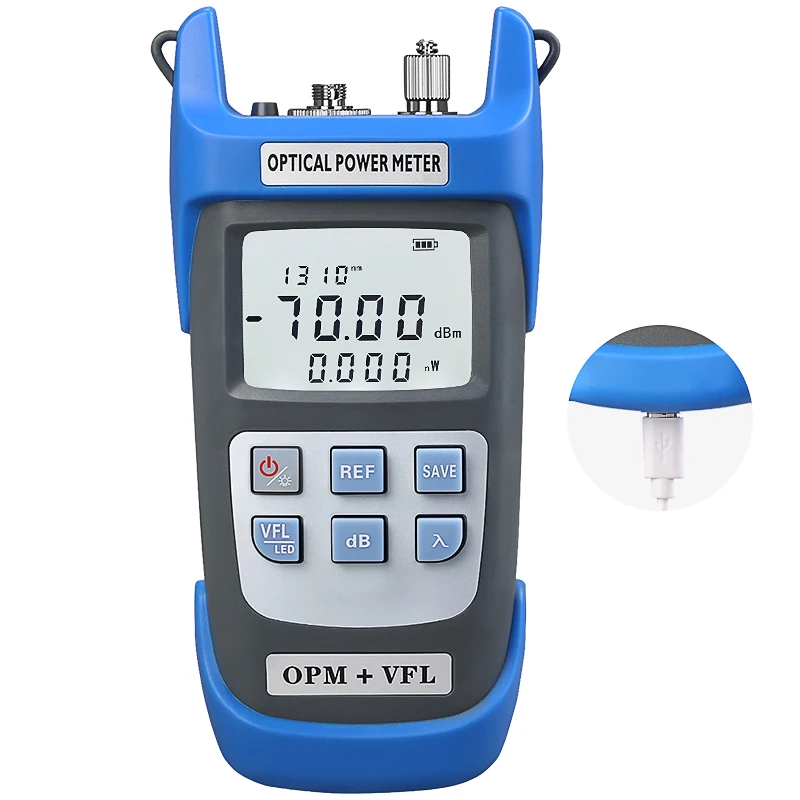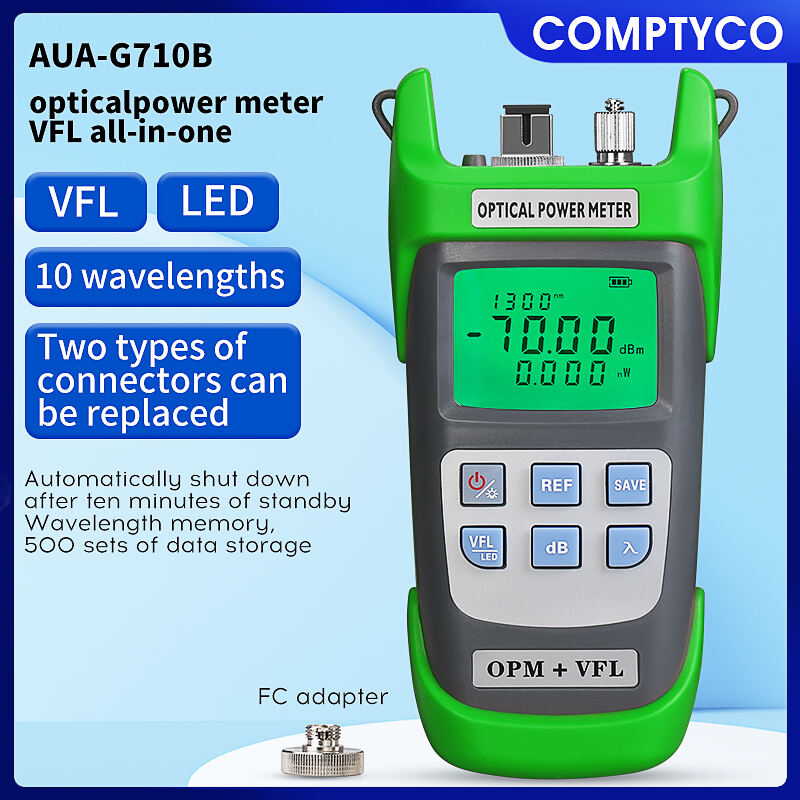Maintaining an optical power meter is crucial for ensuring accurate fiber optic measurements and extended equipment life. These precision instruments serve as the backbone of fiber optic network testing and installation, making their proper care and maintenance essential for telecommunications professionals and network engineers. This comprehensive guide explores the best practices for keeping your optical power meter in optimal working condition.

Understanding Optical Power Meter Components
Core Components
The optical power meter consists of several critical components that require regular attention. The detector window, typically made of high-grade optical materials, serves as the primary sensing element. The display screen, control buttons, and battery compartment make up the user interface components, while protective rubber boots often shield the device from physical damage.
Calibration Elements
Calibration mechanisms within an optical power meter include reference points and adjustment circuits. These elements ensure measurement accuracy across different wavelengths and power levels. Understanding these components helps technicians maintain proper calibration schedules and identify potential issues before they affect performance.
Daily Maintenance Procedures
Cleaning Protocol
Regular cleaning of the optical power meter detector window is essential for accurate readings. Use specialized fiber optic cleaning supplies, including lint-free wipes and appropriate cleaning solutions. Never use regular tissue paper or harsh chemicals, as these can damage the sensitive optical surfaces.
Storage Requirements
Proper storage extends the life of your optical power meter significantly. Store the device in its protective case when not in use, away from direct sunlight and extreme temperatures. Keep the detector port covered with the provided dust cap to prevent contamination and damage to the sensitive components.
Periodic Maintenance Tasks
Battery Management
Monitor battery levels regularly and replace or recharge as needed. For devices with replaceable batteries, clean the battery contacts periodically to prevent corrosion. Some modern optical power meters feature rechargeable batteries, requiring careful attention to charging cycles to maintain battery life.
Calibration Schedule
Establish and follow a regular calibration schedule based on usage patterns and manufacturer recommendations. Most optical power meters require calibration every 12-24 months, though frequent use may necessitate more regular intervals. Document all calibration activities and maintain records for quality assurance purposes.
Troubleshooting Common Issues
Display Problems
When encountering display issues, first check the power source and contrast settings. LCD screens may become difficult to read in extreme temperatures or after extended use. Some displays may require periodic adjustment of brightness and contrast settings for optimal visibility.
Measurement Accuracy
Inconsistent readings often indicate contamination of the detector window or calibration drift. Verify measurements using known reference sources and clean the detector window thoroughly. If problems persist, professional recalibration may be necessary to restore accuracy.
FAQ
How Often Should I Clean My Optical Power Meter
Clean the detector window and external surfaces before each use or at minimum weekly when in regular use. More frequent cleaning may be necessary in dusty environments or when working with multiple fiber connections.
When Is Professional Service Required
Seek professional service when experiencing persistent accuracy issues, physical damage, or when calibration certification expires. Additionally, if internal components become exposed to moisture or the device suffers impact damage, professional evaluation is recommended.
What Are Signs of Battery Deterioration
Watch for decreased operating time between charges, unexpected shutdowns, or erratic behavior during measurement. These symptoms typically indicate battery replacement or professional service is needed to maintain reliable operation.







